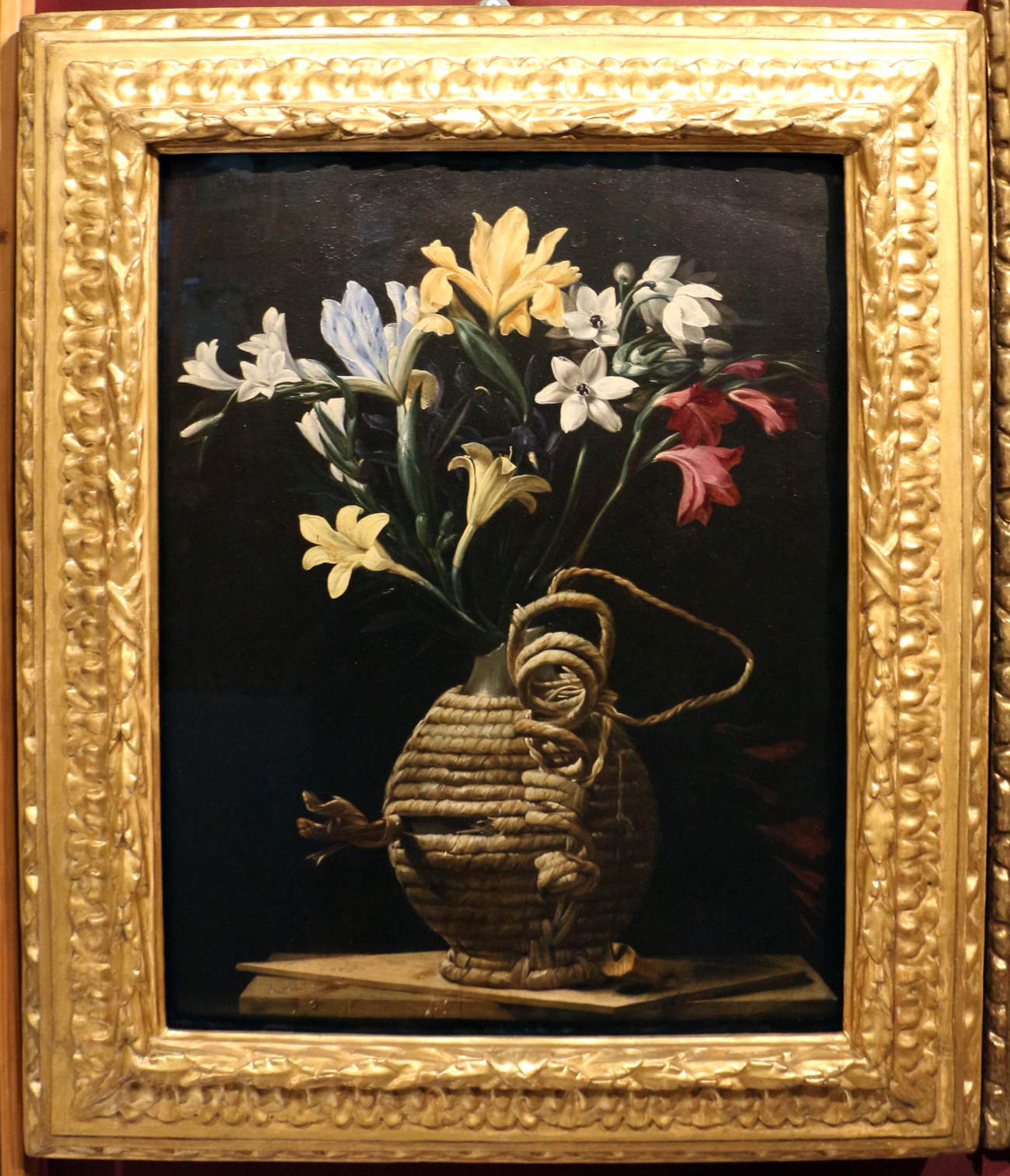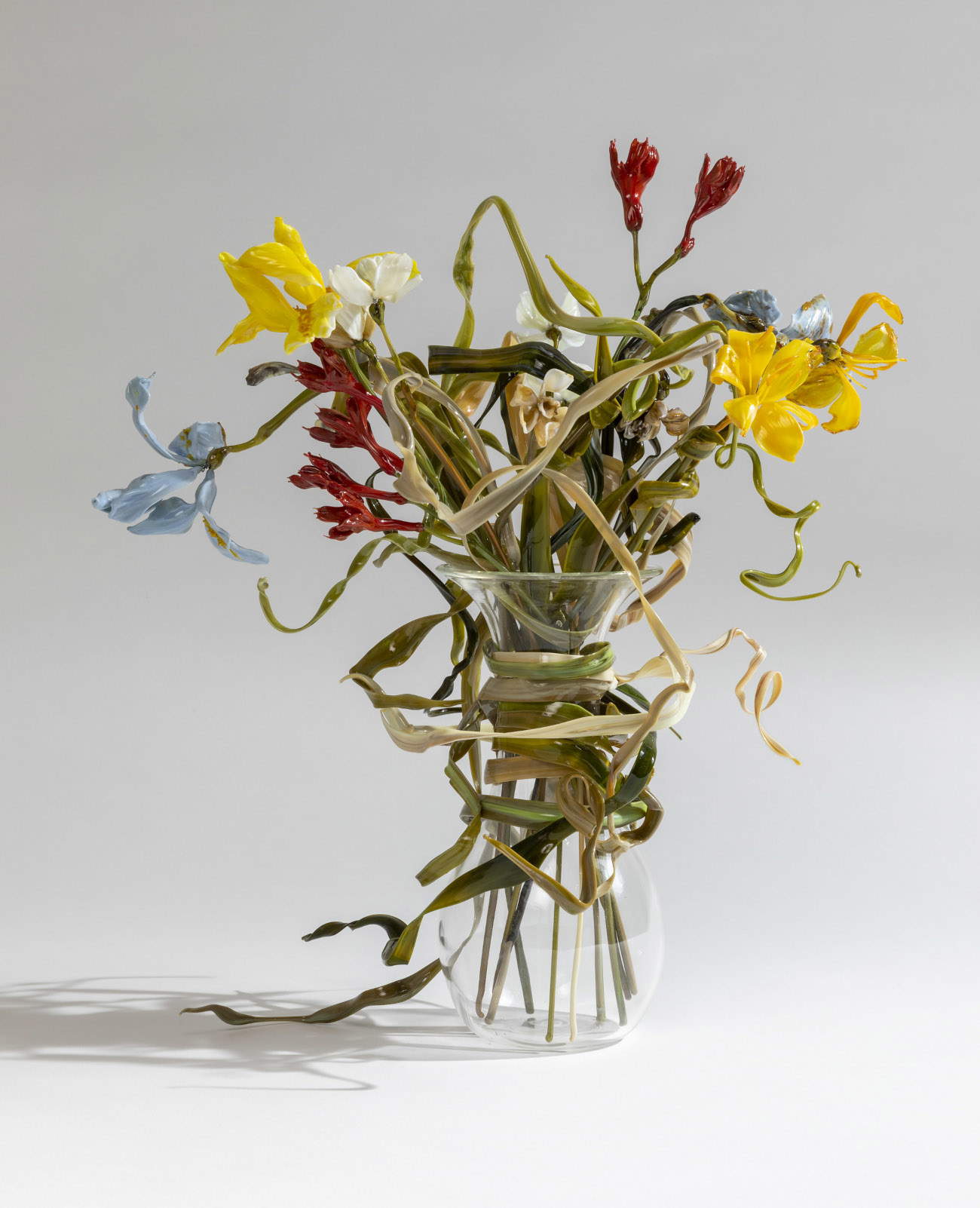From March 27 to June 30, 2024, at the Museo di Castelvecchio in Verona, the enigmatic work Fiasca spagliata con fiori by an anonymous master made between 1625 and 1630 and from the municipal art collections of Forli, Italy, will be confronted with Lilla Tabasso ’s 2021 glass sculpture Groviglio, inspired by the painting by the unknown artist. The unprecedented exhibition juxtaposition is curated by Francesca Rossi and Luca Fabbri and is part of the Ospiti in Galleria format. On the initiative of the Civic Museums of Verona, the Museo di Castelvecchio in collaboration with the Museo Civico San Domenico di Forlì and the Venetian gallery “Caterina Tognon Arte Contemporanea,” present these masterpieces in dialogue with the monumental Crucifixion by the Master of Santa Anastasia, the pinnacle of 14th-century sculpture in Verona, on display in the Sculpture Gallery of the Scaliger museum. The collaboration between the Municipality of Verona and the Municipality of Forlì was established as a moment to enhance their respective civic cultural heritages on the occasion of the exhibition Preraphaelites. Modern Renaissance, running at the San Domenico Civic Museum in Forlì until June 30, 2024. Andrea Mantegna ’s work Sacra Famiglia con una Santa from the Museo di Castelvecchio is presented in the exhibition itinerary of the Forlì exhibition, in a comparison between Italian masters from the 14th to the 16th century and the Preraffaellite artists. In the logic of an exchange between masterpieces, the Spagliata Flask with Flowers from the San Domenico Civic Museum will be set up in the museum and architectural context of Castelvecchio. This temporary installation, located in the space conceived by Scarpa, intends to enrich the sculptural group of the Crucifixion with new keys to interpretation and still bring out the profound connections that the works establish with each other and with the viewer.
In a small panel is painted the humble flask with a chipped neck and worn wicker covering, transformed into a vase of flowers. Irises, gladioli and stars of Bethlehem, rendered with such realism as to seem tangible, offer themselves to the light, while the dark background reveals the tabletop, namely a board set at an angle on what looks like a humble carpenter’s table. Behind this magnificent still life can be seen an uplifting message: just as the colorful bouquet finds a place in a broken and popular flask, so the highest moral values can reside in every individual, beyond social and cultural differences. The aura of mystery surrounding the painting, attributed to the “Maestro della Fiasca di Forlì,” is amplified by the anonymity that still shrouds the artist’s identity. As art historian Antonio Paolucci, among the first to celebrate the exceptional nature of the Forlì painting as one of the “absolute pinnacles of naturalism of Caravaggio’s matrix,” has repeatedly stressed, the work is an “impressive stroke on Truth” of undeniable painterly quality, equal only to the greatest natural inventions of Italian painting, such as Caravaggio’s Basket of Fruit, to which it has often been compared. Unlike Caravaggio’s masterpiece, the Fiasca, a “beautiful and mysterious painting,” casts the search for epidermal truth in a suspended, almost mystical atmosphere, in which the dramatic memento mori is only seemingly contradicted, but actually reaffirmed, by the extraordinary and ephemeral vitalism of nature.
During her first solo exhibition, Atarassia, held in spring 2021 at the Venetian gallery “Caterina Tognon Arte Contemporanea,” Lilla Tabasso, an artist, designer and biologist from Milan, explored the finiteness of the human condition through a personal reinterpretation of nature, creating delicate and transparent sculptures of plants and flowers molded in glass, a universal symbol of fragility. In Groviglio, the artist was inspired by Forli’s famous Fiasca spagliata con fiori. A bunch of sparse flowers, once fresh and fleshy, are now on the verge of wilting, while a supple wicker branch twists around the transparent vase containing them.
“I grew up in a family of prominent antiquarians for generations, and ancient art is the first major art form I deeply and unconsciously assimilated. I had known about the ”flask with flowers“ for a long time and always found inspiring the detail of the broken straw coming off the flask and ending in an unruly curl. I started from here, wanting to keep the same kind of floral composition with even dissonant colors between them, as if to emphasize the unpredictability of the scene and making it my own by replacing the straw with leaves that escape the control of a vase by twisting around it and seeking the same freedom as that curl,” explained Lilla Tabasso.
“The collaboration between civic museums,” explained Councillor for Culture Marta Ugolini, “represents a pillar for cultural progress and the development of knowledge in contemporary society. This synergy between cultural institutions brings benefits that go beyond the mere exchange of works of art. We are therefore grateful to the City of Forli and its San Domenico Civic Museum and hope that the collaboration and exchange of knowledge between museum professionals can continue and be enriched over time. In the meantime, we invite visitors to the Castelvecchio Museum to dwell on this new and valuable juxtaposition of works.”
“The path of rediscovery and enhancement of the artistic and museum heritage of the city of Forlì continues,” points out Culture and University Councillor of the City of Forlì Valerio Melandri. "A path that also unfolds through the exchange of great works of art and the strengthening of relationships between institutions and museum centers. A virtuous example of this is the loan of Andrea Mantegna’s timeless masterpiece, acquired as part of the temporary exhibition on the Pre-Raphaelites at the San Domenico Museums. On behalf of the entire municipal administration of Forlì, I thank the City of Verona and the Castelvecchio Museum for this valuable synergy that is good for culture, but above all for our communities."


 |
| Verona, at the Castelvecchio Museum two works in comparison: the Maestro della Fiasca di Forl? and Lilla Tabasso |
Warning: the translation into English of the original Italian article was created using automatic tools. We undertake to review all articles, but we do not guarantee the total absence of inaccuracies in the translation due to the program. You can find the original by clicking on the ITA button. If you find any mistake,please contact us.